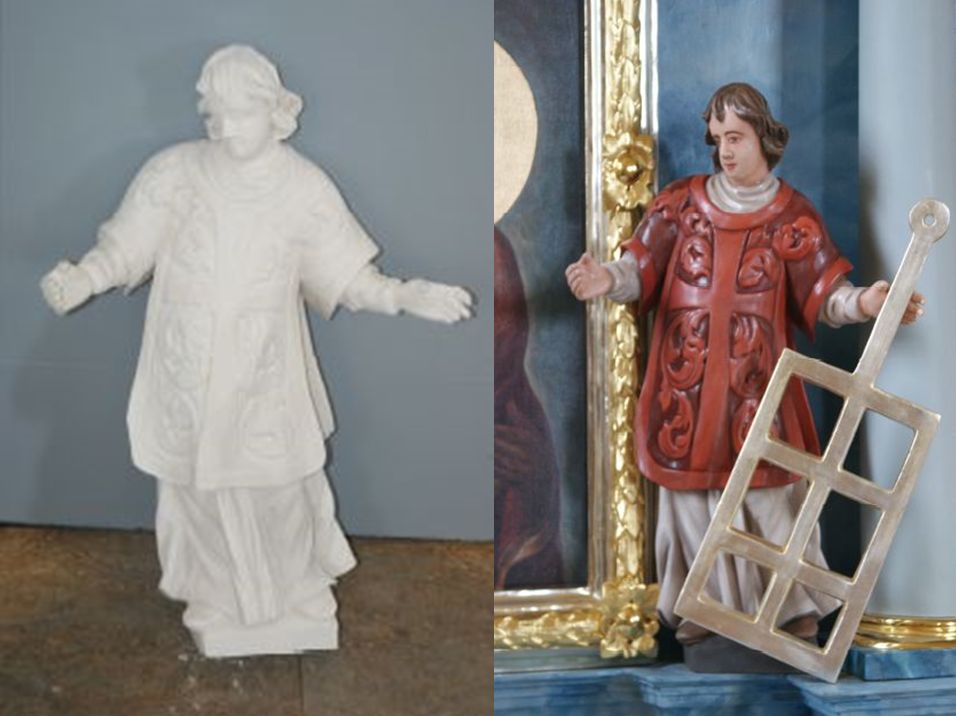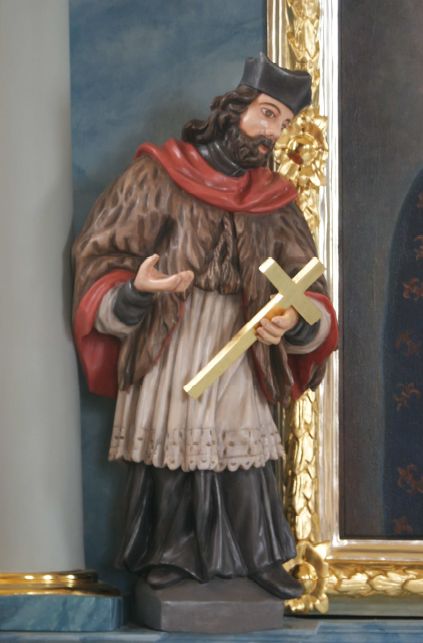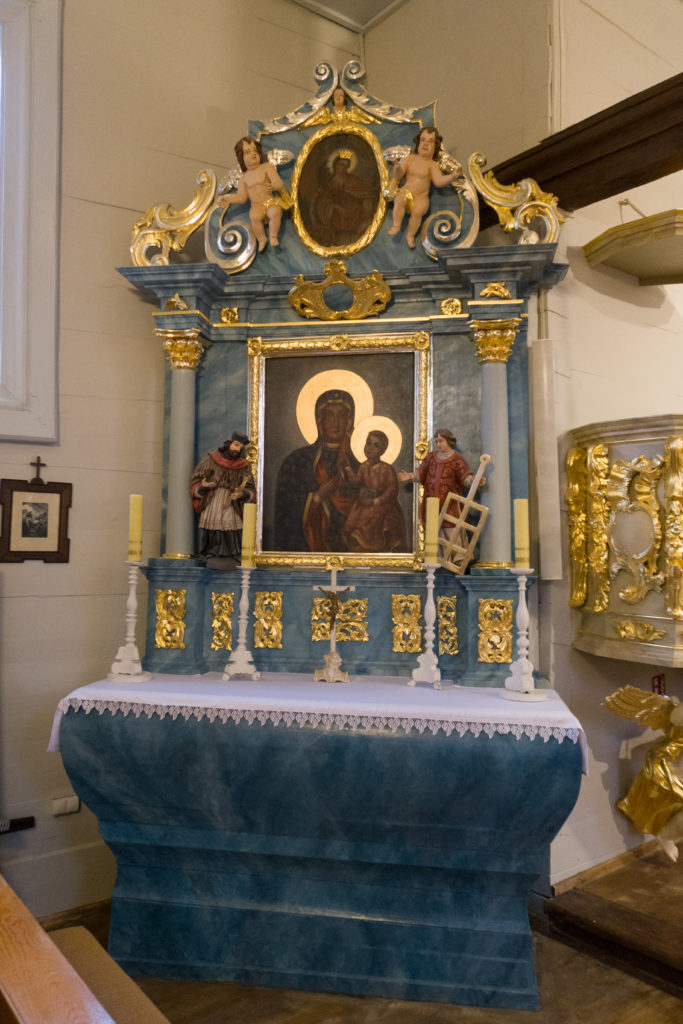Project effects
Church of St. Catherine – Waliszewo
CONSERVATION WORKS OF THE SIDE ALTAR DEDICATED TO THE MOTHER OF GOD OF CZĘSTOCHOWA FROM THE CHURCH OF ST. CATHERINE OF ALEXANDRIA IN WALISZEWO
The altar of the Mother of God from the church of St. Catherine of Alexandria in Waliszewo was made in the 18th century in the baroque style.
STATE OF PRESERVATION
The state of preservation of the object is relatively bad, it had been repainted several times with oil paints, and the elements of wood-carved decoration had been covered with foil which had imitated gold leaf – schlagmetal in oil technique. The object suffered many damages and losses of the wood carving (each of the angels lacks one wing , stylized decoration of the central painting’s frame, among others). Damages of the wood tissue caused by xylophages’ foraging were visible. Unoriginal fillings of wood losses had been done with plaster or chalk-adhesive mortar, also in the cracks of the altar construction. Constructional fragments had cracked in a few places due to wood drying at the beginning of the construction, and there were big cracks in the altar mensa.
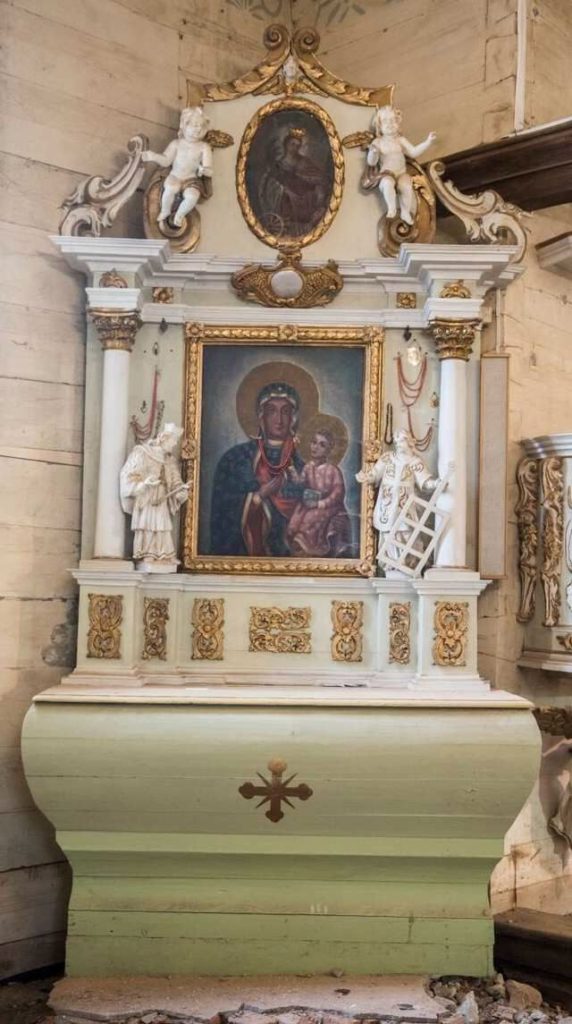


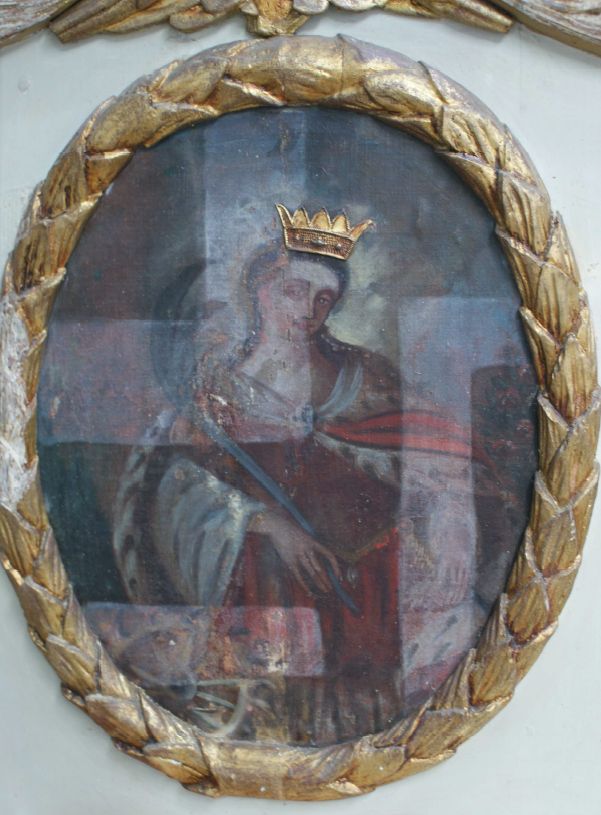
Oil paintings on canvas were extremely dirty, with varnish turned yellow, and had illegible colours and representations. The painting of St. Catherine in the altar crowning had been partially repainted, air bubbles and creases of the canvas were visible.
AIM AND PREMISES OF CONSERVATION
The purpose of the conservation and restoration works was to restore technical and aesthetic values. Conservation tasks included filling of wooden elements, which had undergone mechanical damage, performing a thorough impregnation, removing layers of overpaint, as well as restoring gilding and silvering in the original technology.
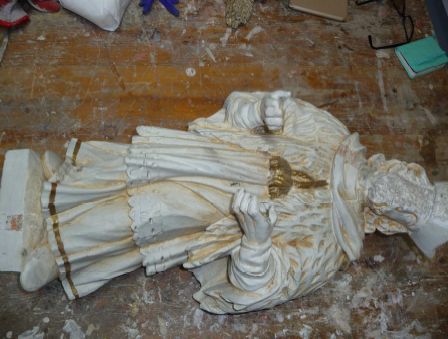
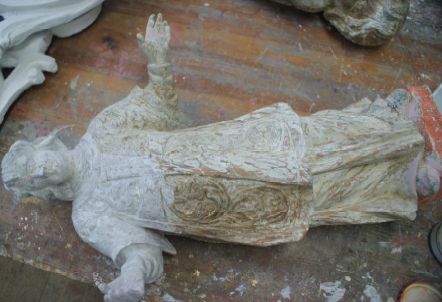
PROCESS OF CONSERVATION
The first stage involves photographic documentation of the object and disassembling all decorative elements so that only the main construction of the altar remains. Testing in the form of uncoverings in all elements of the altar, revealed traces of the original decor. Wood carving had been thoroughly cleaned probably during renovation works in the 1980s, and the original polychromy had been left only in small recesses. The first layer of paint was marbleised, in blue tones made in fat tempera technique.

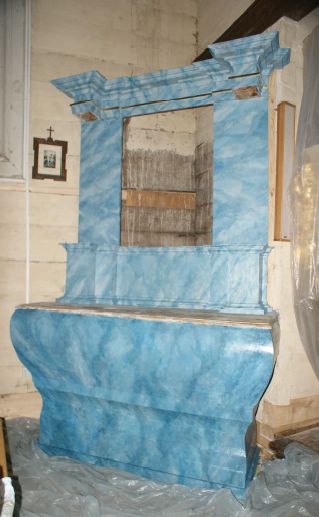
First, the altar was cleaned from dust and all types of screws such as drawing pins, nails and strings were removed. The reredos and the tomb required woodworking repairs and constructional support. Tilting of the reredos was stabilized by anchoring it to wall paneling of the church, and the cracks and loosening of the tomb were filled with plugs and slats, which had been complemented with plaster and mortar. Then the impregnation of individual damages caused by wood-damaging pests was performed in the techniques of baths and surface soaking. All new wood fragments, constructional elements, woodcarvings, sculptural fillings as well as the whole object were protected against xylophages.
Small losses of wood were filled with putty made of sawdust and polyvinyl acetate or epoxy resin. Openings left after woodboring beetles were filled with putty with sawdust with adhesive bonding. When the unoriginal layers of paint and schlagmetal were removed, chalk-adhesive primer was put in the losses on the clean wood. Altar’s original colours were restored in the tones of blue-grey marbleisation, and then secured with varnish. Gilding and silvering on wood-carved elements were done with matt and gloss finish, which resembled the original gilding decoration. Polished silver leaf was protected against oxidation with shellac and varnish.
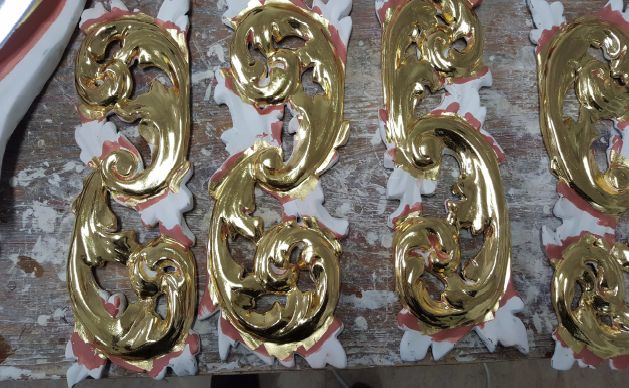
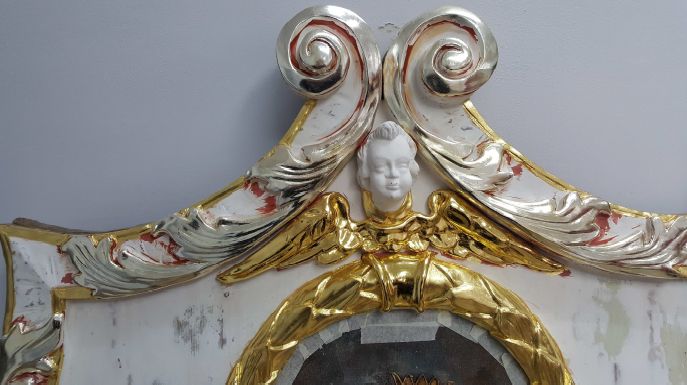
Oil overpainting was removed and complexion uncovered, and then the layer of paint was complemented with resin paints and secured with a matt varnish.
The oil painting of St. Catherine on canvas from the altar’s crowning, had been glued to a wooden support. Because the canvas did not show any mechanical damage, it was not detached from the boards, the surface was cleaned, yellow vanish and flawed unoriginal overpaintings were removed and primer and paint losses were filled. Similar works were implemented during the renovation of the painting of The Mother of God of Częstochowa – oil painting on canvas had been correctly stretched on the frames, and it did not show signs of fabric damage. Its surface required cleaning from old dust, soot (due to candles) and degraded varnish as well as restoration of the halo gilding.
